by Tamil Guardian, London, April 23, 2024
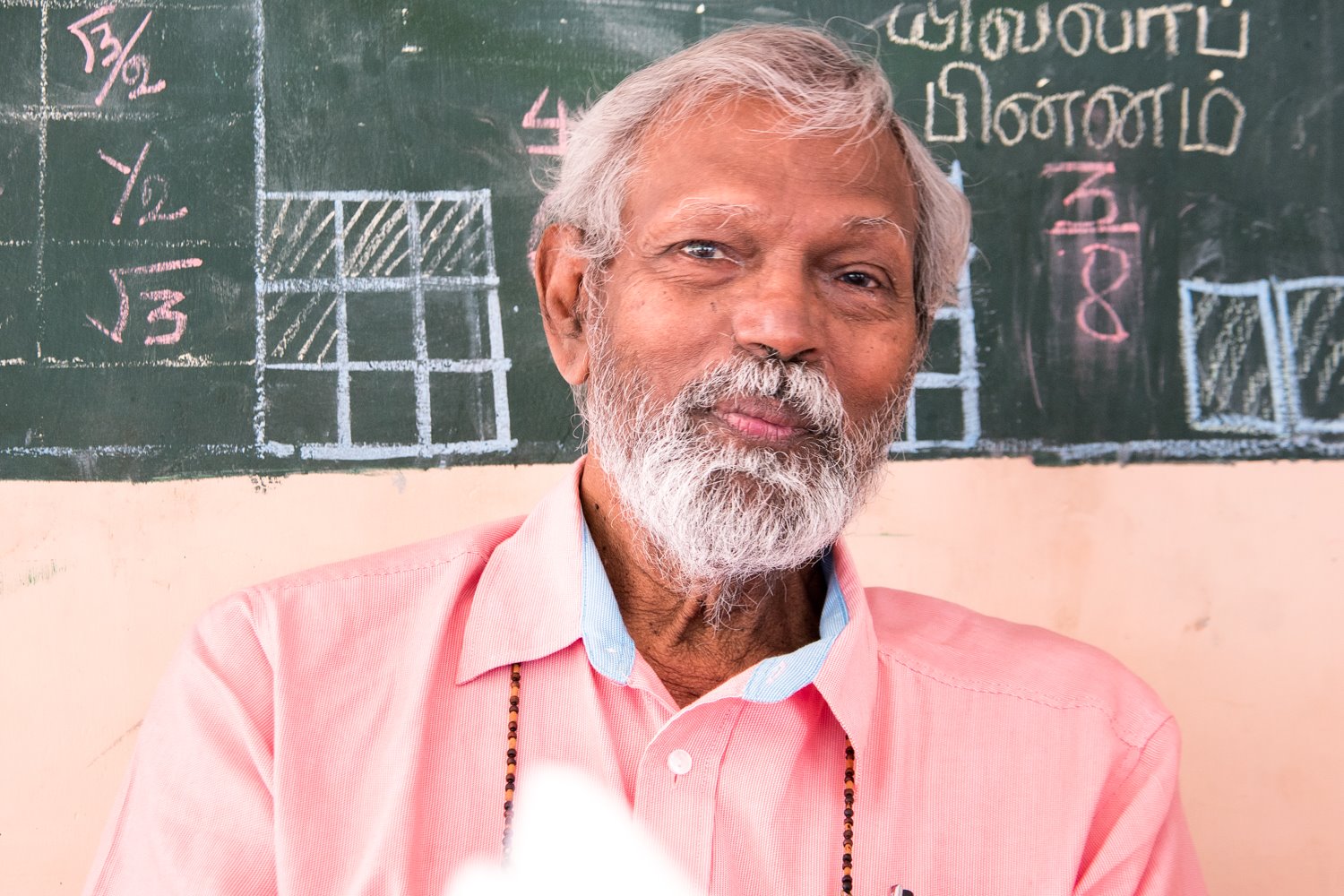
Nagalingam Ethirveerasingam, the Jaffna-born activist and athlete, who competed in the 1952 Olympics and won the first Gold Medal in any sport for Ceylon passed away on Thursday, 18 April 2024, aged 89 years old.
Born in Periyavillan in 1934, Ethirveerasingam broke high jump records at every age while a student at Jaffna Central College. He would go on to win the 1951 National Meet in Colombo, with a string of impressive performances ensuring his selection in the Ceylon squad at the 1952 Olympic Games in Helsinki. He next participated in the 1954 Asian Games, where he set a new joint Asian Record in the high jump records.
In 1958, despite co-holding the Asian High Jump record, as well as the Ceylon record, he was initially not selected to be on the team for the Asian Games in Tokyo, Japan.
“I’d already qualified to compete,” he would tell the I Am project in 2023. “I was not selected to go to Asian Games. At that time, I think has started a discrimination.”
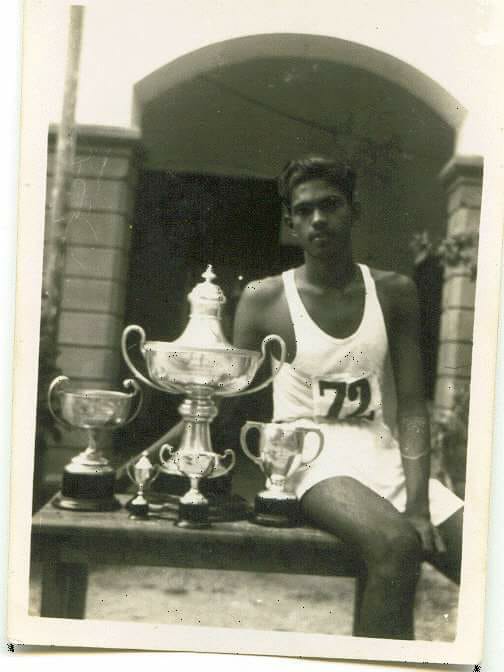
A 17-year-old Ethirveerasingam at the 1951 Ceylon AAA national meet.
Ethirveerasingam was only picked for the team after a series of newspaper articles were published in the Daily News, but being selected so late, the committee told him he had to find and pay his own way to Tokyo from Los Angeles, where he was studying after being awarded a full athletic scholarship to the University of California, Los Angeles (UCLA). A benefactor donated US$ 5,000 for his travel just a few days before the games.
He would win the Gold Medal, Ceylon’s first ever in any sport, and set a new Asian and Ceylon record of 6 feet 8 inches (2.03 meters). His Ceylon record lasted until 1989.
“On the day I won, it’s the day riots in Colombo started,” Ethirveerasingam later recalled. The 1958 pogrom had broken out, and Sinhala mobs began attacking, raping and murdering Tamils across the island. Estimates range from between 300 and 1,500 Tamils murdered in the days of violence which resulted in many more injured and the arson, looting and destruction of Tamil homes and businesses.
He was unaware of the events unfolding in his country until he spoke to his brother upon returning to the USA.
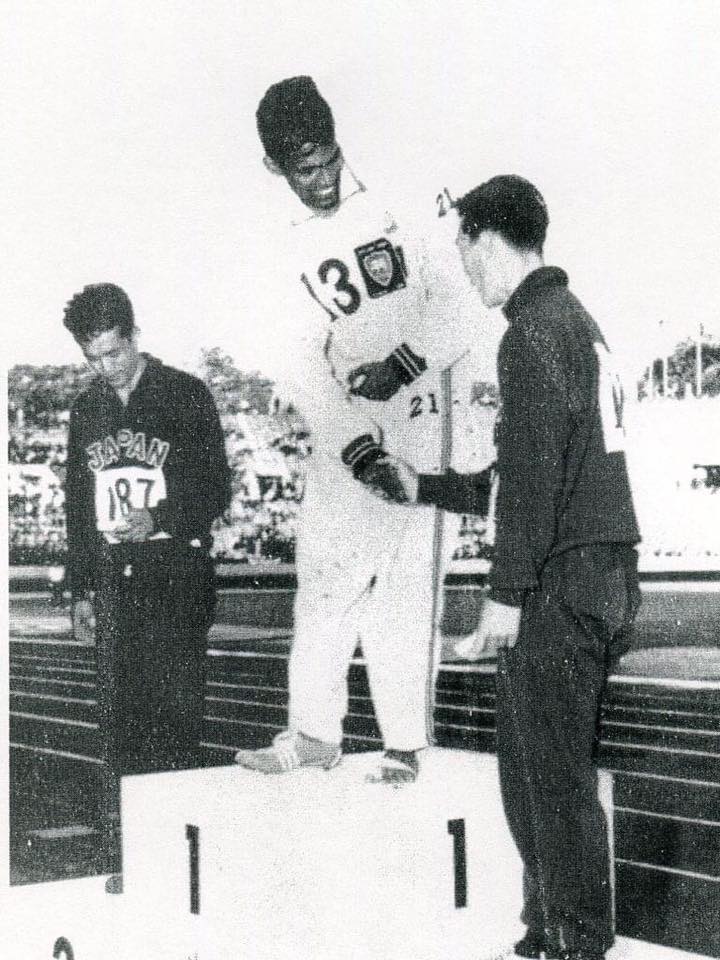
May 25th 1958. Ethirveerasingam received the gold medal at the Asian Games in Tokyo. He was unaware of the pogrom taking place on the island.
In 1960, despite being the Asian and Ceylon High Jump record holder, and jumping the qualifying height for the Olympics, he was not selected for the Mexico City Olympic Games. Again, in 1962, a campaign was required for his selection, and he won a Silver Medal at the Asian Games in Jakarta.
His athletic career coincided with increasing racial discrimination and violence against the island’s Tamils. In 1956, he and two friends went to observe the Federal Party’s Satyagraha at the Galle Face esplanade against the “Sinhala Only Bill” that was to be introduced in Parliament. As hundreds of Tamils, led by the Federal Party’s SJV Chelvanayakam, staged a peaceful sit-in protest, they were set upon by a Sinhala mob. The island’s first anti-Tamil pogrom ensued, with more than 150 Tamils across the island murdered – the first of many massacres that were to take place in the decades to come. Ethir and his two friends were almost killed by rioters. Fortunately, one of the rioters recognised him from the pictures in the newspapers. They were taken to a pharmacy and allowed to stay until it was safe.
In 1961, Ethirveerasingam took this photograph of the Federal Party’s Satyagraha campaign in Jaffna.
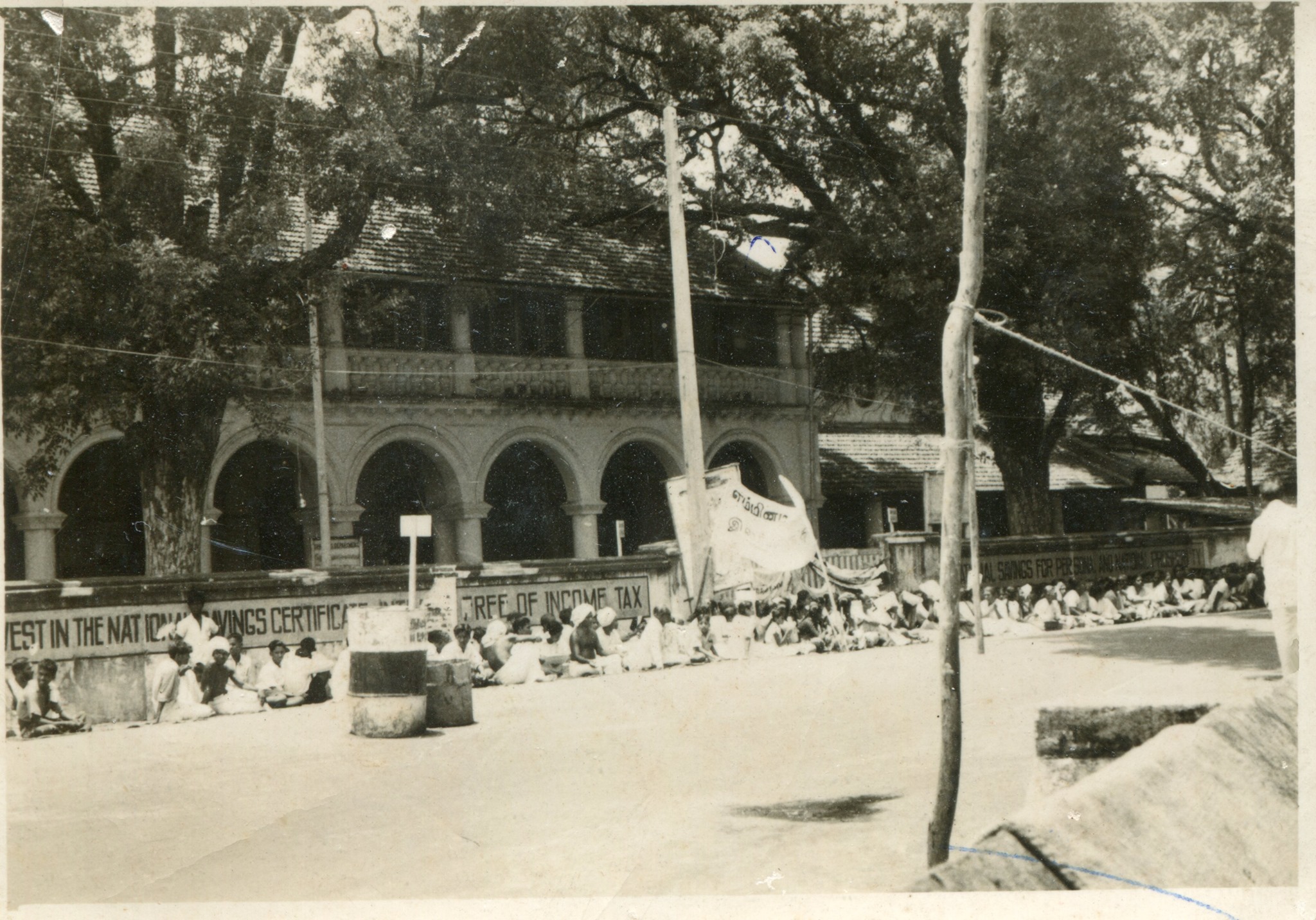
Photograph by Ethirveerasingam of the 1961 Jaffna Satyagraha campaign.
“After 5pm when returning home I saw Major V G George, whose Public School High Jump record I broke in 1951, was standing in front of Jaffna Central Hostel entrance,” he would write years later. “He was with (Brigadier) Udugama’s forces who were housed in the Hostel. He advised me not to get [out] of my house the next day.”
“The next day the army beat up the sit-in demonstrators and arrested Leader Chelvanayagam and other ITAK MPs. They were taken to Colombo and put [on] house arrest. This is the first time the army was sent by PM Srimavo Bandaranaike to Jaffna and arrested civilians exercising their right to peacefully demonstrate.”
Ethirveerasingam spent the following years working in different parts of the world including Sierra Leone, Nigeria, and Papua New Guinea.
In 1994, after retiring at the age of sixty, he returned to work in the Vanni, where he stayed on as the Sri Lankan military launched its offensive into the Jaffna peninsula. On October 30, 1995, over half a million Tamil men, women and children fled their homes in Jaffna and were displaced towards Vanni.
“Tragic times when many died of shells and due to lack of medicine,” he said. “Lost my sister, aunt and sister-in-law. It was the beginning of many displacements and deaths.”
“No cameras were allowed into the Vanni. I made this drawing as a therapy the first night.”
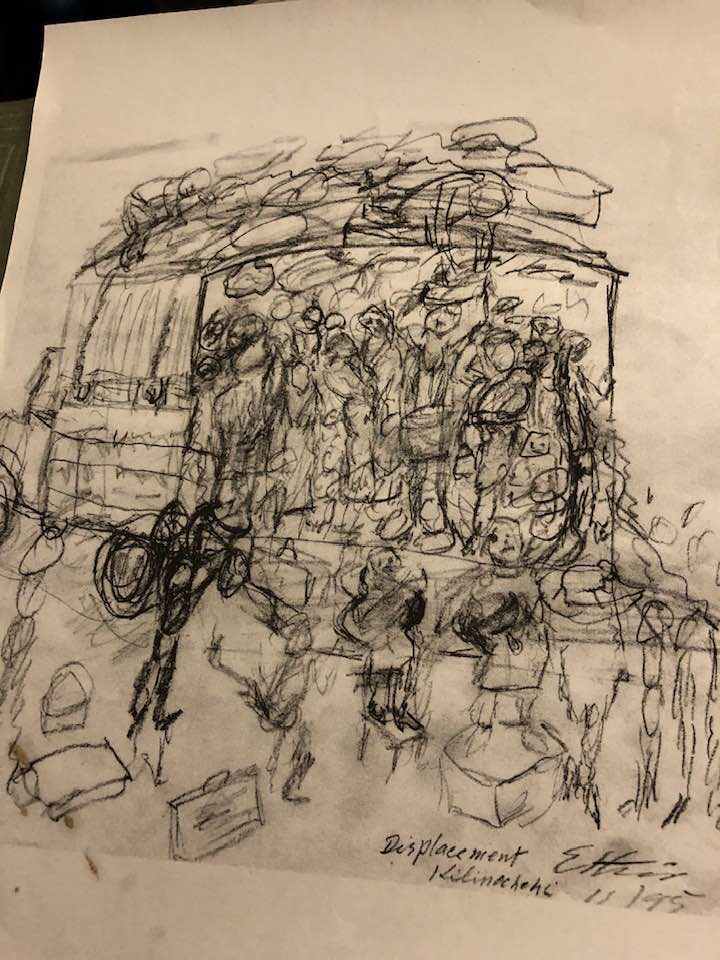
Artwork depicting the 1995 exodus from Jaffna by N. Ethirveerasingam
In 1998, Sri Lankan President Chandrika Kumaratunga Bandaranaike, who launched the offensive into Jaffna, offered him the honorific ‘Deshabandu’ title. Ethirveerasingam respectfully declined, stating in his letter to her, “I cannot in good conscience accept such a title when my people are suffering and the war is continuing.”
In July 2004, during a ceasefire between the Sri Lankan government and LTTE, Ethirveerasingam was in Kilinochchi when the first-ever Tamil Eelam Sports Festival was held. “As an Olympian and volunteer consultant in Education and Sports I helped wherever and whenever I was asked,” he said. “It was my privilege to see that the Sports Festival was organized and conducted at a high level.”
His philanthropy and activism in the North-East continued even after the Mullivaikkal genocide, including through the United States Tamil Action Group (USTAG), formerly known as USTPAC, an advocacy organisation he helped found in 2009.
A well-known figure in the Eelam Tamil community, Ethirveerasingam passed away peacefully at his home in Los Angeles, surrounded by his family. He is survived by his wife, three children, and eight grandchildren.